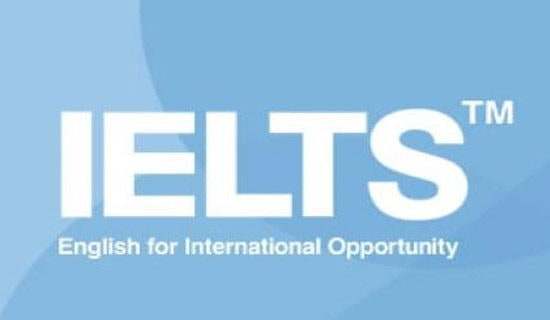- 相关推荐
1月21日雅思大作文真题范文(通用7篇)
前一段时间仔细读了于丹《论语心得》这本书,虽不是大彻大悟,但也触动心灵。《论语》是一本记录孔子与他的弟-子言行的书,是孔夫子从生活中演绎出来的为人处世及对弟-子的教导。其中许多经典的词句是我们许多人耳熟能祥的,这部曾经统治中国社会思想两千多年的儒家经典,今天仍然能为我们现代人构建和谐社会,建立良好的人际关系,提供一份温馨的劝导,《论语》的真谛,就是告诉大家,怎么样才过上我们心灵所需要的那种快乐生活。《论语心得》讲述了天地人之道、心灵之道、处事之道、君子之道、交友之道、理想之道和人生之道。书中每一个故事都告诉了我们许多人生的哲理和处事做人的道理。

在我的心目中,孔子是一位离我们很遥远的古代圣贤,《论语》犹如高山上一颗劲松高不可攀,只可仰望而不可触及。而于丹老师仿佛是一位美味快餐的加工高手,它能把一般人很难懂的《论语》通过心得的方式来解读,似乎把难以消化吸收的食品加工成了老少皆宜备受欢迎的高档营养品。她带我们超越时空,把一位两千年前的圣人引领到了众人眼前与今人对话。孔子没有圣贤的架势,朴素平和、平易近人,时时传递一种朴素、温暖的生活态度。她把深奥的道理讲的浅显易懂,真正走进了我们的心里。她说:“孔子没有温度,只有色彩”。
每个人的一生中都难免有缺憾和不如意,也许我们无力改变这个事实,而我们可以改变的是看待这些事情的态度。《论语》的精华之一,就是告诉我们,如何用平和的心态来对待生活中的缺憾与苦难。人生百年,孰能无憾?人这一生中总会遇到这样那样不如意的事情。人首先要能够正确面对人生的遗憾,要在最短的时间内接受下来。不要纠缠在里面,一遍一遍地问天问地,这样只能加重你的苦痛。你要尽可能地用自己所可以做的事情去弥补这个遗憾。承认现实生活中的不足之处,并通过自己的努力去弥补这种不足。生活中会有许多不如意甚至不合理,也许凭我们个人的力量无法改变,但我们却可以改变自己的心情和态度。当一个不幸降临了,最好的办法就是让它尽快过去,这样你才会腾出更多的时间去做更有价值的事情,你才会活得更有效率,更有好心情。
在紧张的社会生活中,《论语心得》的介入,可以让很多人学会平和,得到精神上的舒缓。初读时,在读到某一句,某一个故事的时候,会有一种豁然开朗的感觉。瞬间觉得很多事情是不用去计较的,让人的心灵得到一次洗礼,一种净化。在她引用的故事里有这样一则:一座寺庙里供着一个花岗岩雕刻得非常精致的佛像,每天都有很多人来佛像前膜拜。而通往这座佛像的台阶也是跟它采自同一座山体的花岗岩砌成,台阶不服气地对佛像提抗-议:我们本是兄弟,凭什么人们采着我们去膜拜你,你有什么了不起?佛像淡淡地说,因为你只经过了四刀就走上了今天的岗位,而我经过了千刀万剐才成佛。我读后眼前一亮,我们过去总是喜欢与他人相比,为什么你我一起参加工作,你今天如此辉煌?往往比的都是自己的缺失和他人的所得,而忽视了他人付出的努力、做出的贡献、肩负的责任、承受的压力。想得到他人所得背后的付出,千刀万剐与四刀相比相差何其大,这样比起来我的内心就平和多了,怨气自然就少了。你有你的快乐,我有我的开心,知足常乐!
为人处事很重要的一点是三思而后行,毕竟大家都知道,在这个世上没有后悔药,当你发现自己做错时,已经太晚了,因为一切都成为了定局,无法挽回,举一个例子:一个孩子十分爱发脾气,于是父亲让他每发一次脾气就在篱笆上敲一颗钉子,一天下来,孩子看见他敲了许多钉子,心里很不好意思,父亲便让他如果一天不发脾气,就拔一颗钉子,当钉子拔完时,孩子高兴极了,因为他学会了克制,可是父亲却告诉他虽然钉子拔了,但却会留下一个个不能消除的洞。听了这个故事,大家想必都明白了一个道理,我们做事一定要先往远想,这样避免对别人的伤害,也减少自己将来的悔恨。在《论语》中我们学会了处世,但更多的是它教会了我们怎样做人,做一个君子,做一个谦恭廉让,知耻铭志的社会有用之人。几千年来世人仍愿意尊奉孔子,把他的话作为座右铭,作为修身养性的准则,因为,我们都坚信:明天是正直人的世界!说真的,我很欣赏于丹教授对《论语》的这种简单,快乐的感悟,因为在《论语心得》中,没有寻章摘句,没有引经据典,没有从教条到教条、从书本到书本的搬家,一切都娓娓道来,将孔子从圣人的高位复原到脚踏实地的师长,将圣贤经典点化为隽永心语,不故作高深,不矫情卖弄。
【1月21日雅思大作文真题】相关文章:
雅思作文真题08-10
雅思作文真题范文09-20
2017年雅思真题作文09-05
2017雅思历年真题作文10-29
雅思真题作文模板范文09-06
雅思大作文真题范文09-05
雅思大作文真题范文欣赏04-29
2017年雅思真题作文范文07-22
2017年雅思作文真题范文07-27
雅思听力真题高频句子08-22